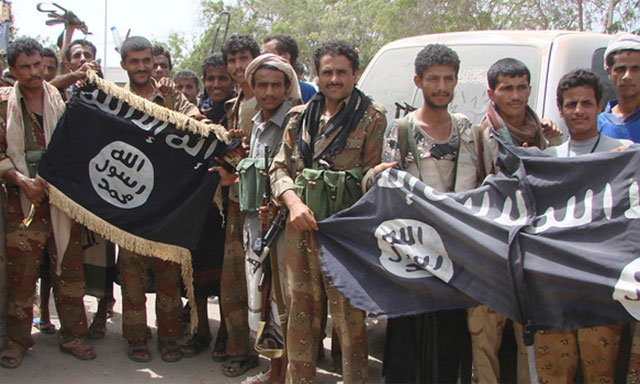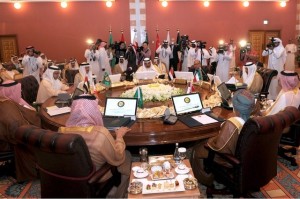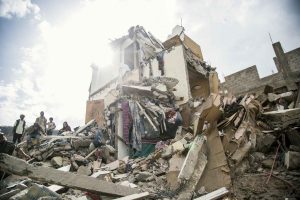by Maximilian Beauchene
Five days after Donald Trump took office, he sat down at the White House with Jared Kushner, Steve Bannon, James Mattis, Michael Flynn, Gen. Joseph F. Dunford Jr., and Mike Pence to be briefed on a possible raid against an al-Qaeda-linked stronghold in a remote area of Yemen. The new president gave the green light for the operation, and soon after the first on-the-ground kinetic action approved by the new president was underway.
It seems fitting that the first military action authorized by Donald Trump was directed against al-Qaeda in the Arabian Peninsula (AQAP), an offshoot of the group that ushered in the modern era of U.S. warfare in the Middle East after the infamous 9/11 attacks. For the better part of a decade, al-Qaeda was the United States’ primary enemy in Iraq and Afghanistan, and combating the group was among the primary justifications for continued involvement in the region. But al-Qaeda today is a far cry from what is was in the early 2000s.
While the Islamic State has become the primary U.S. enemy in the region in recent years, al-Qaeda and its affiliated networks are far from defeated. In Yemen, Al-Qaeda in the Arabian Peninsula (AQAP) has emerged as a formidable force. It has been able to exploit the security vacuum created by the country’s ongoing civil war to reinvent the al-Qaeda brand and rebuild the group’s ability to attract funding, recruits, and ideological support.
AQAP traces its roots back to al-Qaeda in Yemen (AQY), a group most famous for the bombing of the USS Cole in 2000. U.S. covert operations largely defeated AQY in the years following that attack. However, it was able to reestablish itself in 2006 after a prison break freed 23 members of the group, including Nassar al-Wahishi and Qasim al-Raimi, two men who would go on to rebuild the al-Qaeda franchise in Yemen.
AQAP was officially formed in 2009 when members of the Saudi branch of al-Qaeda fled south into Yemen in response to a government crackdown on the group in Saudi Arabia. The group was small at the time, only 200-300 members, but this would soon change when Arab Spring protests began in 2011 and underlying tensions in the small Gulf nation were brought to a boiling point. As Yemen descended into civil war, AQAP continued to grow in the shadows, reportedly adding over 1,000 members in 2010 alone.
A Crucial Learning Curve
As the Yemeni security situation deteriorated and Houthi militants geared up for war in the north, AQAP was claiming control over an increasing amount of territory in the country’s southeast. Their leaders cultivated ties with the insurgent group Ansar al-Sharia, a key alliance that would provide AQAP with a larger group of aligned fighters while simultaneously not requiring these fighters to pledge allegiance to the group. This move fostered recruitment among Yemeni fighters focused on regional control, allowing AQAP to capitalize on the militant, anti-government, separatist sentiments in southern Yemen that have existed for generations.
As tensions continued to mount and the central government’s control over the country was being increasingly challenged, AQAP leaders saw the deterioration of the state as a perfect opportunity to declare an Islamic emirate based in the southeastern region of the country. Ansar al-Sharia subsequently declared an emirate in the territories it controlled (in conjunction with AQAP leadership), which quickly caught the attention of the Pentagon.
This was AQAP’s first critical mistake during the period of instability created by the Arab Spring protests. Because AQAP and Ansar al-Sharia had been open about their affiliation, and also about the territory they were attempting to administer, the U.S. and the Yemeni government could mount a well targeted campaign that rolled back the group’s control over the southern region of the country. The second mistake during this period was Ansar al-Sharia’s aggressive implementation of sharia in the territories it was attempting to administer, which generated great animosity among a local population taken aback by the brutal administration of the law.
The alienation felt by civilians living in Ansar al-Sharia’s attempted emirate enabled the newly elected government of Abdrabbuh Mansour Hadi to partner with local forces to mount a offensive against the group in 2012. However, this offensive was short-lived. As tensions continued to rise with Houthi rebels in the north, the Hadi government was not able to invest the military resources needed to secure the territory once held by AQAP and its affiliates in the long term.
Reinventing the Al-Qaeda Brand
After the government offensive to oust the group from its strongholds in 2012, AQAP reverted to its earlier patterns of operation. It cultivated connections with local councils, militias, and tribal groups, and when the Houthi rebels moved on the Yemeni capital the group was well positioned to reassert control over large areas of the southeast.
As the Yemeni civil war began to heat up in early 2015, AQAP proved that it had learned crucial lessons from its failed attempt to establish an emirate in 2011. First, it abandoned its reliance on Ansar al-Sharia to administer territory under al-Qaeda’s influence. The two groups remain connected, but AQAP leaders now see Ansar al-Sharia as a forward-operating insurgent group, not a group capable of governing territory.
Around the same time, AQAP also made a concerted effort to become an indispensable part of the constellation of anti-Houthi militias quickly forming in the south as a Houthi advance on the port city of Aden seemed increasingly inevitable. AQAP provided material support to these militias and sent fighters to the front lines of the battle against the Houthi advance. In this way, the group became a key part of the growing southern militant movement and an important power center in the fragmented country.
Back in their traditional power centers in the southeast, AQAP took a similar approach to governance. Instead of imposing a new style of government or system of law, AQAP leaders embedded themselves into pre-existing government structures to operate behind the scenes. AQAP no longer raised its infamous black flag over any cities but instead engaged in backroom dealings and the creation of shadow governments modeled after existing bureaucratic structures. There was no harsh implementation of sharia, and the group made a concerted effort to win over civilians they’d alienated during their expansion in 2011, even going so far as to disavow some AQAP affiliates that conducted indiscriminate attacks against civilians in the region.
This shrewd transformation AQAP’s political arm has paid massive dividends in recent years. Even though UAE-backed forces successfully pushed AQAP fighters out of their de facto capital al Mukalla and other areas in 2016, the group’s relative popularity among the civilian population has meant that it can still operate in these occupied areas. It can still exert some political influence over the councils with which they worked during their pseudo-occupation, and in many cases these councils saw their partnerships with AQAP as beneficial. These connections provide AQAP with a safe haven, and it has managed to retain some of its revenue streams as well.
What the Future Holds
Although many in the West portray al-Qaeda and its various branches as a cohesive group solely focused on attacks on European and American soil, this simply is not the case. AQAP can no longer be simply characterized as a terrorist group. Instead it’s a hybrid group that operates as an insurgency in the territory it holds while simultaneously planning and executing international terror attacks.
In understanding its failures, AQAP has become a group that can wear many masks, and is able to deftly navigate conflict, political power, and international operations in sophisticated ways. The group, along with its militant arm Ansar al-Sharia, has become a key actor on the ground in Yemen’s civil war, making inroads with the various Islamist factions combatting the Houthi rebellion in conjunction with the Saudi-led coalition. AQAP has been able to provide these militias with weapons, fighters, and training in ways that the Saudi-led coalition has not, especially in the early days of the civil war.
AQAP does not look like it will be defeated in Yemen anytime soon. Most military efforts underway in the country are focused on the war to push Houthi forces back into the northwest, with the exception of covert U.S. operations aimed at degrading AQAP in the southeast. However, these operations have been less than fruitful, with U.S. drone operations remaining a major driver of support for AQAP and its affiliated networks. Further, the group’s political restructuring has played a major part in its current intractability, and there has been little change in strategy on the part of the U.S. and its Yemeni allies in response.
Looking forward, the new structure of AQAP has troubling implications beyond the borders of Yemen. The shadowy approach that the group has taken to governance, in lieu of overtly claiming control over territory, can be exported to other al-Qaeda aligned groups, making them harder to understand and even more difficult to combat. Al-Qaeda’s most dangerous branch has effectively re-entrenched itself in southern Yemen, and if the Trump administration’s botched special forces raid in January is any indication, the country will be a critical battleground against al-Qaeda for many years to come.
Maximilian Beauchene is a recent graduate of Hampshire College where he wrote his thesis on the relationship between international interventions and the evolution of militancy in Yemen, Libya, and Somalia. He is currently writing about U.S. military policy in the Middle East and Africa, with a focus on the expanding role of special forces. Photo: AQAP





